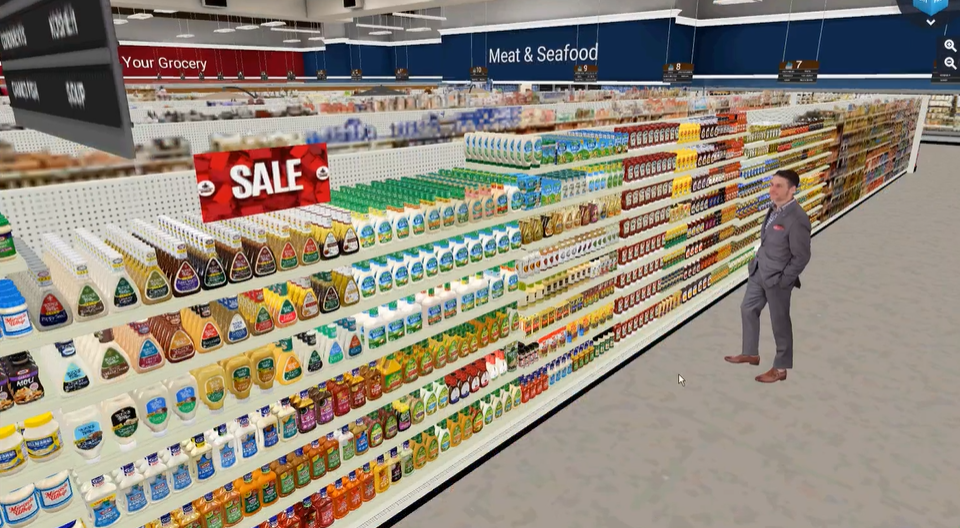In the retail industry, everyone is looking for innovative ways to grow. Whether it involves eliminating extra spending, well-trained workers, or finding new and creative ways to market products, both retailers and brands are continuously striving for improvement. But what if your growth is being held back by a mistake you don’t even know you’re making? It’s not uncommon for decision-makers at companies to be too close to their projects and therefore unable to see what’s holding them back from continued growth. In the complex world of retail planning, how do you know if your shelf space strategy is truly the most beneficial?
Shelf Space Strategy: What is it and why does it matter?
To those outside of the retail and CPG space, the placement of goods on store shelves may seem inconsequential. But for those who understand the industry, you know that the smallest merchandising decision can impact sales and make or break a product launch. Think of retail shelf space as real estate and the eye-level shelves are the prime spots. Except getting prime product placement for different products isn’t the only issue at stake; retailers also need an overall shelf space plan that will result in the best profit outcome. There is a finite amount of space on shelves and retailers have to find the most beneficial way to fill it.
Having a strategy for retail planning such as shelf layout is a necessity for retailers and manufactures. Often, a single manufacturer has three different shelving strategies for three retail partners. For example, a brand could have shelf concepts like ribboning, vertical blocks, or horizontal blocks for those three distributors, and then test each of these to identify the best planograms to implement at each store. Shelf-space plans influenced by detailed shopper insights tend to be successful. But if that’s not the case, it’s likely that you’re limiting your brand’s growth.
Common Shelf Space Strategy Mistakes
The following are common mistakes retailers and brands make when creating a shelf space strategy:
- Relying on historic data: Outdated strategy methods often leave out testing and depend entirely on how shelf strategies have performed in the past. If you’re making the mistake of referring to past studies to make decisions, it’s highly likely that you’re depending on outdated and inaccurate data. Instead of wasting money and time on shelf sets that underperform, it’s important to focus on consistently updating shelf space strategy strategies. Shopper behaviors change all the time and if you’re not tuned into the ebb and flow of consumer trends, you’re unintentionally minimizing profits.
- Implementing new layout changes without testing first: Some companies make layout changes without test data to justify those decisions. Whether decision makers are basing those decisions on gut instinct or what they think have worked for other brands, making changes without testing is basically the equivalent of shooting a moving target in the dark.
- Relying on traditional testing methods: Store planning testing is traditionally done in a physical mock store. This method can produce some valuable insights, but at a higher price. Building a test store and planning the logistics is a huge drain on resources (time, money, labor) and not as dynamic or flexible as a newer technology like 3D virtual reality testing.
- Not having the full story: If you’re relying on traditional merchandising and retail testing methods, the insights you’re getting are likely only giving you one part of the picture, and not a fully fleshed-out narrative. For example, if you only rely on data from an attitudinal survey, it won’t provide as much insight as you need to really know that your shelf space strategy is a winner.
How do common mistakes impact profit?
If you’re not implementing the shelf space strategy with the highest projection for profit, you’re holding back the growth of your business. While you might be meeting your bottom line with the current store concept you have now, if your shelf strategy is not informed by updated and detailed data, you don’t know if it positively or negatively impacts profit.
Testing in a traditional mock store isn’t all bad, and in fact, it may yield some valuable insights. However, the drawback is that it takes much longer and is more expensive than tech-centered methods. As a result, it isn’t a viable option for all organizations. For those who can afford it, the extra costs might eat into that optimized profit.
Eliminating Blind Spots and Extra Spending with VR Testing
It’s not a stretch to say that current methods for shelf space strategizing need a general overhaul. Although it may feel like a risk to put your resources towards a new technology that you don’t have experience with, the true risk is staying stagnant. The most forward-thinking brands and retailers out there are leveraging cutting edge technology like virtual simulation software for testing. The following is a breakdown of how and why VR simulations help you solve your shelf space strategy issues.
What is VR Testing and how does it help with shelf space optimization?
3D virtual reality software for retail store testing allows stores and brands to visualize store layouts in a 3D digital twin of a physical store. Store planners can create 3D versions of products, store layouts, signage, etc. and test them in a virtual reality environment.

How virtual reality simulations help you close the blind spots in your shelf space planning:
- Test a variety of store concepts: Store marketing concepts being tested can include new product launch, new signage, category management/assortment, how to lift the overall category, etc. The versatility of testing a variety of concepts in a virtual environment saves on the resources it would require to test these concepts in a physical test store.
- Test multiple concepts: VR software allows brands and retailers to test multiple shelf strategies against the current setup to see which one would perform best in a real store. It’s like having the benefit of hindsight before you go to market with a new shelf plan. For example, in one of our case studies, a manufacturer tested three different shelving strategies and identified a $40 million growth potential for one strategy.
- Fix shortcoming of current strategy: VR testing often sheds light on the minor adjustments that would influence purchase decisions or encourage impulse buying, and as a result, optimizes profit.
Insights learned from VR simulations:
Some of the key insights retailers and brands can learn from VR testing includes:
- Behavioral metrics: How do shoppers react to your store concept? Obtaining accurate insights on shopper behavior relevant to your shelf space strategy helps you identify which strategy works best.
- Attitudinal metrics: What are shoppers thinking when they exhibit certain behaviors in reaction to your shelf concept? By identifying the reasoning behind the action, you learn what changes to make to your shelf strategy before going to market.
Get Started Today with InContext Solutions
If you are a retailer, or brand considering a VR testing solution, contact InContext Solutions. Our experts will get you started on implementing VR software to extract valuable insights for shelf space strategy.





